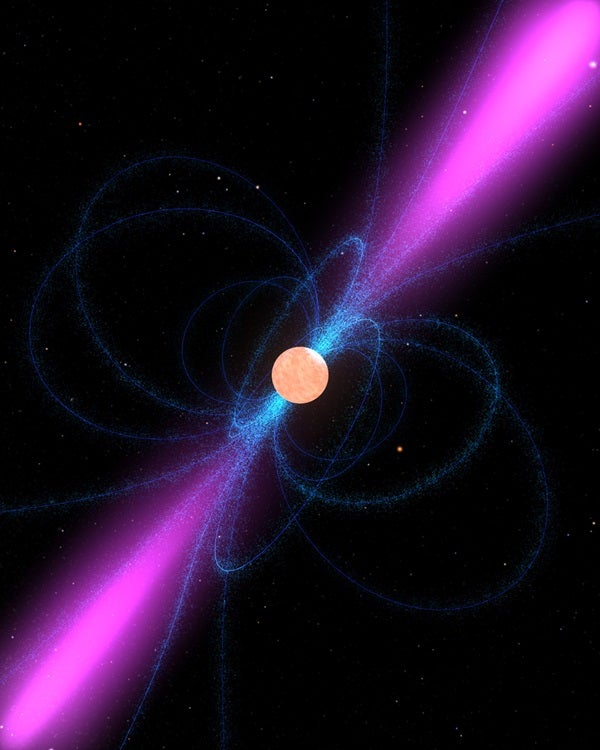Pulsars are rotating neutron stars — remnants of massive stars that end their lives in supernova explosions. They act like cosmic lighthouses whose beams sweep through the universe. Their rotational velocity decreases in time, but can suddenly increase in rare events called glitches. These glitches are caused by the unpinning and displacement of vortices that connect the crust with the mixture of particles containing superfluid neutrons beneath the crust.
The team of astronomers discovered that the glitches of the Crab Pulsar always involve a decrease in the rotational period of at least 0.055 nanosecond. The Crab Pulsar was one of the first pulsars to be discovered and has been observed almost daily with the 42-foot telescope at the Jodrell Bank Observatory over the last 29 years. The huge amount of data makes this object the best choice to study glitches.
The smallest glitch is likely to be caused by the unpinning and movement of billions of vortices. “Surprisingly, no one tried to determine a lower limit to glitch size before,” said Antonopoulou. “Many assumed that the smallest glitch would be caused by a single vortex unpinning. The smallest glitch is clearly much larger than we expected.”
“Astronomers would of course like to know whether the smallest glitches of other pulsars are also caused by billions of vortices. The next step is to sift through the data of other pulsars and to continue observing,” said Cristobal Espinoza from the Institute of Astrophysics Pontificia Universidad Catolica in Chile.
“By comparing the observations with theoretical predictions, we learn about the behavior of matter in these exotic objects,” said Watts. “The precise cause of glitches is still a mystery to us, and this result offers a new challenge to theorists.”










